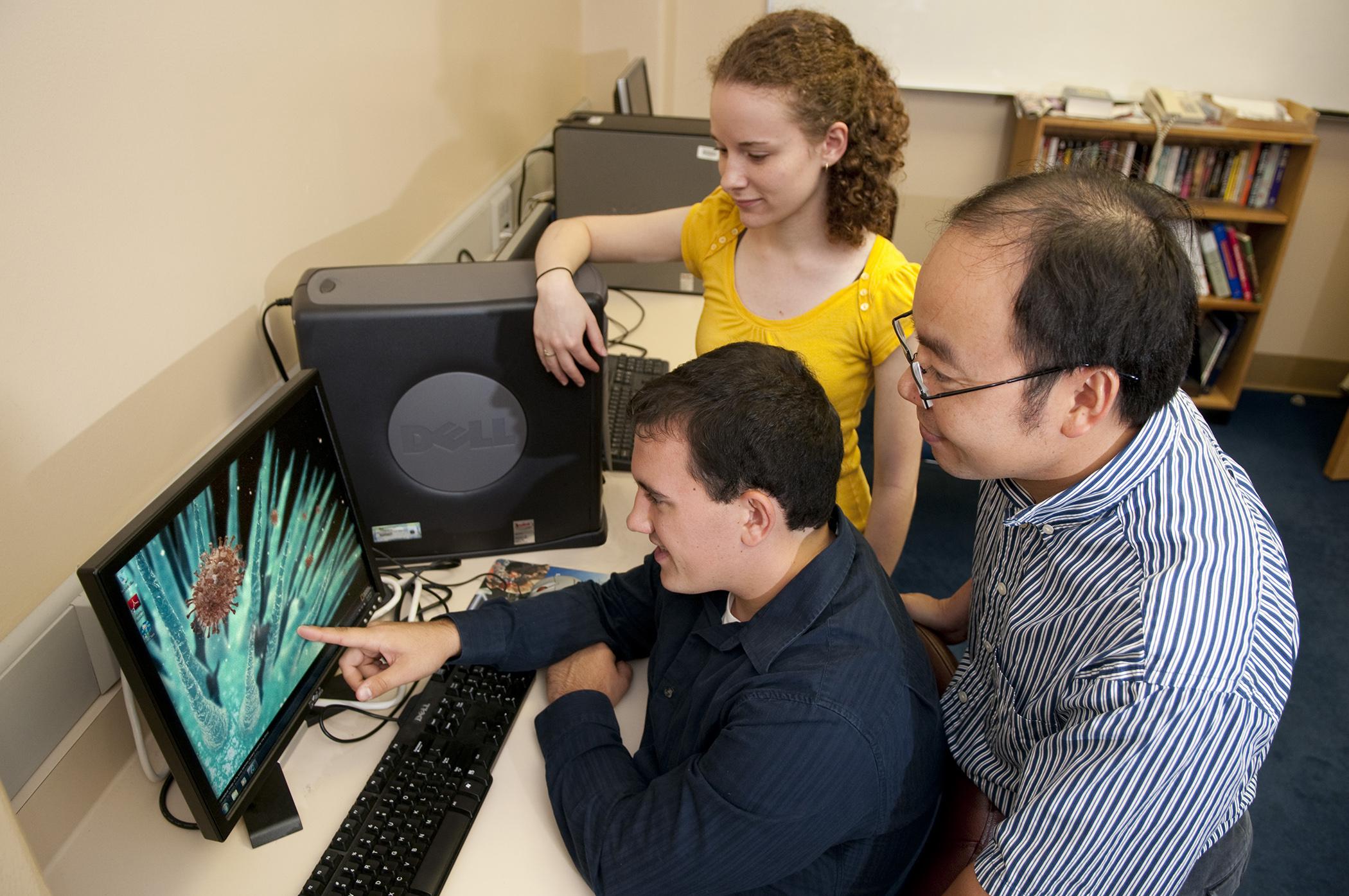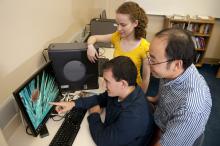Information Possibly Outdated
The information presented on this page was originally released on February 4, 2013. It may not be outdated, but please search our site for more current information. If you plan to quote or reference this information in a publication, please check with the Extension specialist or author before proceeding.
CVM researcher seeks to aid in flu vaccine development
by Karen Templeton
Mississippi State University College of Veterinary Medicine
MISSISSIPPI STATE – In the midst of one of the country’s worst flu seasons in recent history, work is already well under way to develop next season’s influenza vaccines.
Seasonal flu causes approximately 24,000 deaths and more than 200,000 hospitalizations in the United States each year. Dr. Henry Wan, an associate professor at the Mississippi State University College of Veterinary Medicine, wants to make the development of vaccines a more efficient and economical process.
“The flu looks different every year, and we have to have a new vaccine ready for that season’s viruses,” said CDC spokesperson Curtis Allen. “Researchers are now studying the strains that we’ll likely see in our next flu season. They are gathering information and making predictions about what will be needed.”
Determining what seasonal flu viruses to vaccinate against is a long, time-consuming process that depends on samples analyzed at laboratories around the world. Each year, thousands of scientists in about 136 influenza centers in 106 countries, along with numerous vaccine companies and surveillance programs, generate data to develop influenza vaccines. The vaccines developed through this process are generally effective and are considered the world’s best defense against the flu.
Dr. Wan uses a computerized system to antigens, the substances that cause antibody production in response to different viruses. His system, called AntigenMap, sounds complicated, but it offers a clear visual of flu viruses over time and populations. Antigen>allows users to “see” viruses on two- or three-dimensional maps.
“Vaccine development is expensive and depends on many laboratories around the world. It also involves the use of live viruses,” Wan said. “Antigen involves looking at the changes of viruses through history and over geographic regions. It is basically mapping out viruses and showing their actual antigenic distance from each other,” Wan said.
Researchers begin the mapping process by ranking each virus.
Wan likens this process to the way users rank movies on Netflix.
“When you rank movies on Netflix, the program is able to build recommendations that suit your tastes,” Wan said. “We build the same sort of table for flu viruses, and what results is the viruses’ activity and behavior. Using a computer program, that table gets turned into a map, and we can actually see the different viruses and how they are related to each other.”
In addition to knowing where viruses are and how they may change, the system shows researchers what populations the viruses are close to, which gives insight into how they may mutate throughout a flu season.
“Flu is notoriously unpredictable, and scientists at the World Health Organization and others work year-round in reviewing viruses and developing effective vaccines,” said Allen, with the CDC. “We’ll have a decision in February about what strains need to be included in the next vaccine.”
These decisions need to made early because it can take five to six months to develop the first batch of vaccinations. Wan hopes his team’s work with Antigen will shorten this decision-making process.
“Without depending on waiting for virus characterization in laboratories, we can get vaccine strain selection quickly,” Wan said. “Being ahead is a good thing in fighting seasonal flu. But for now the bottom line remains the same: everyone should get vaccinated. It is our best bet.”
Contact: Karen Templeton, (662) 325-1100





